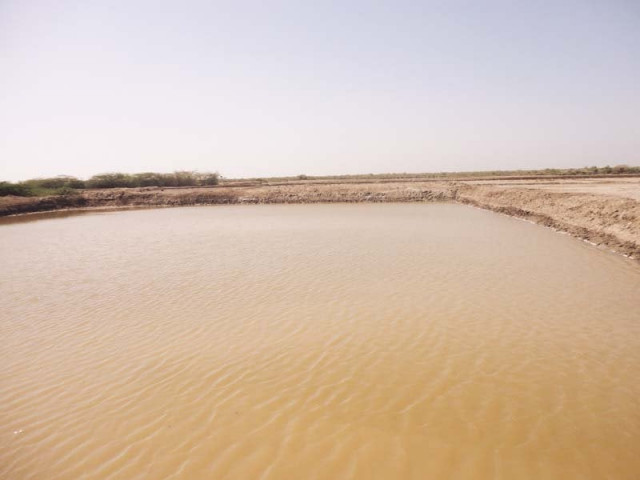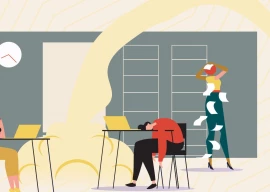
Located in Sanhri creek of Kharo Chan, a tehsil in Sindh province, the town of Siddique Roonjho faces acute water shortages, with sea intrusion further aggravating the problem. To tackle the water crisis in the village, the World Wide Fund for Nature-Pakistan (WWF-Pakistan) team set up a project called Building Capacity on Climate Change Adaptation in Coastal Areas of Pakistan in 2011, funded by the European Commission, which intends to mitigate climate change risks faced by vulnerable communities in coastal areas of Sindh (Keti Bunder and Kharo Chan of Thatta district) and Balochistan (Jiwani in Gwadar district).

Residents continue to fight difficult living conditions due to their strong attachment with the village. PHOTOS : KOMAL ANWAR

Climate change has reduced the income of local fishermen. Intense heat and highly unpredictable rainfall has impacted the agriculture and fishing sectors. PHOTOS : KOMAL ANWAR

Locals fill water containers with fresh water from the reservoir. PHOTO COURTESY: WWF PAKISTAN
So far, WWF-Pakistan has taken two initiatives as part of the project. The first involved building reservoirs and as part of the second initiative, villagers were provided with hand pumps at locations where underground water is drinkable and available throughout the year. As of now, the teams have provided 12 villages in Keti Bunder and Kharo Chan with six community-based water reservoirs, 14 hand pumps and 80 bio-sand filter units.
Efficient management of finite water sources plays a huge role in the lives of villagers in Siddique Roonjho. From December up till March, they rely on fresh water supply from reservoirs filled with either rainwater or water supplied from River Indus to the creeks, and when that begins to run out, they use their limited income to purchase canned water. “If we run out of fresh water, we buy 30-litre drums of water for Rs25 each from Garho,” says 65-years-old villager Asiya. As a second alternative, villagers also fetch water from the reverse osmosis plant installed at Kharo Chan jetty, which has a capacity of 10,000 gallons and is at a walking distance of about 40 to 45 minutes from the village.

Funded by the European Commission, the Building Capacity on Climate Change Adaptation in Coastal Areas of Pakistan project (2011-2015) intends to mitigate climate change risks faced by vulnerable communities in coastal areas of Sindh and Balochistan. PHOTOS : KOMAL ANWAR

Raising livestock is not easy and becomes even tougher in the months of drought from May to June. Villagers provide shelter to animals in huts made of dry straw, wood and mud. PHOTOS : KOMAL ANWAR
Over the last few years, the construction of dams, barrages and reservoirs has significantly reduced fresh water flow, making life hard for people living in villages. Despite this, many are reluctant to leave their homes and migrate to cities as their livelihood is dependent on fishing. It is, therefore, crucial that civil and government agencies continue to invest in similar projects to improve the lives of people who have to walk miles to fetch safe drinking water.
Komal Anwar is a subeditor on The Express Tribune magazine desk. She tweets @Komal1201
Published in The Express Tribune, Sunday Magazine, May 31st, 2015.


















COMMENTS
Comments are moderated and generally will be posted if they are on-topic and not abusive.
For more information, please see our Comments FAQ